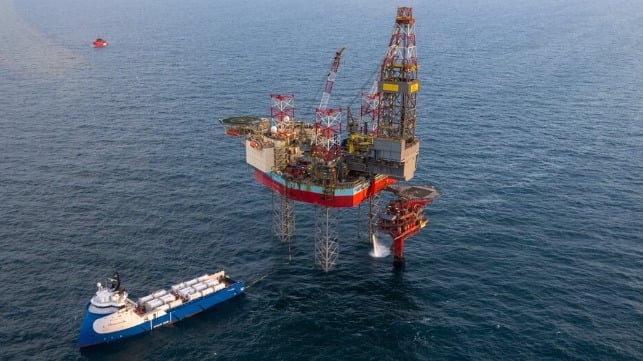First CO2 Stored in World’s First Demonstration of CCS Process

The first successful demonstration of carbon capture and storage below the sea floor was completed yesterday by Denmark’s pioneering Project Greensand in what is being hailed as a watershed moment in the fight against climate change. After having been granted a demonstration license, the project which consists of a consortium of 23 organizations successfully for the first time in the world captured carbon emissions from an industrial plant in Belgium, transported it across international boundaries, and successfully injected it for permanent storage under the Danish North Sea.
“This is a big moment for Europe’s green transition, and for our clean tech industry,” Ursula von der Leyen, President of the European Commission addressing the launch event. She acknowledged the project as, “The first-ever full value chain, for carbon capture and storage in Europe.”
Project Greensand ranks among the most advanced CCS projects in the EU and was the first full demonstration of the process. Carbon emissions from a plant in Belgium operated by INEOS, a petrochemicals manufacturer, were captured and liquified. They were transported from Belgium and Denmark under a bilateral agreement that the two countries concluded last year.
The captured CO2 was loaded into canisters which were transported to a special outfitted offshore vessel, the Aurora Storm. Arriving at the depleted Nini West oil field in the Danish North Sea, a special pumping system transferred the liquified CO2 to the jack-up rig Noble Resolve which completed the injection process into the subsea bedrock. The CO23 is stored at a depth of about 1,800 meters (more than one mile) below the seabed and will be closely monitored.
“Project Greensand marks a leap forward for the development of a Europe-wide CCS infrastructure and therefore for climate protection,” said Mario Mehren, CEO of Wintershall, which along with INEOS is leading the project. “We are showing that it is possible to capture, transport, and store CO2 safely and reliably across national borders and the CCS technology will be able to contribute to a decarbonized tomorrow in the near future.”
His Royal Highness the Crown Prince Frederik of Denmark initiated the first CO2 injection in Denmark in an event that was also attended by Lars Aagaard, the Danish Minister for Climate, Energy and Utilities. Addressing the attendees, Sir Jim Ratcliffe, founder and chairman of INOES said, “This is a breakthrough for Carbon Capture and Storage. This important milestone firmly demonstrates that CCS is a technology that can deliver on a global scale.”
The demonstration phase will continue as the partners work to develop the full infrastructure and processes to scale up the operation. By early April, residual emissions from the Belgian industrial plant, collectively representing up to 15,000 tonnes of CO2, will be stored during the ongoing demonstration phase.

that matters most
Get the latest maritime news delivered to your inbox daily.
By 2025/2026, the partners plan to be storing up to 1.5 million tonnes of CO2 per year as part of Project Greensand. In the final expansion phase, scheduled to begin in 2030, plans call for storing up to 8 million tonnes of CO2 each year. This would represent more than 13 percent of the total annual emissions of Denmark.
The main goal is to store the industrial emissions that it will not be possible to avoid in the future. The European Commission has estimated that the EU will need to store up to 300 million tonnes of CO2 per year by 2050 to its climate goals.
